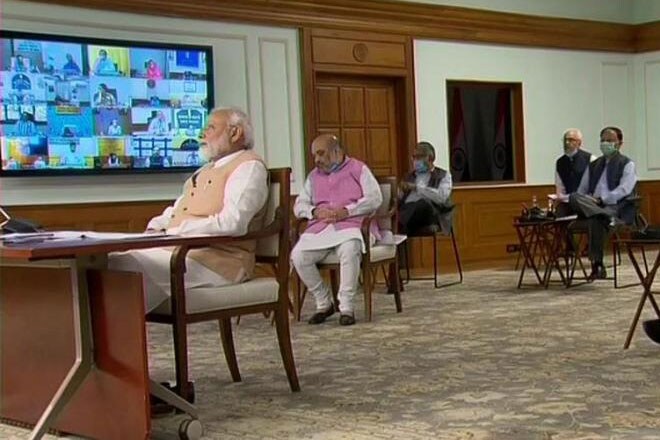There can be little doubt that many of the statements made by Bajaj Auto managing director Rajiv Bajaj in an interview to CNBC-TV18 were quite over the top; one gem was “lockdown is a solution looking for a problem”. Another one was “I don’t know what curve is there that needs to be flattened … all evidence globally suggests the young and healthy don’t need to be flattened … they need to get back to work … it is only the old and vulnerable that need to be secured”. As it happens, on April 6, the government pointed out, that 47% of the infected were below 40 years old, 34% between 40 and 60 and just 19% above 60.
Also, while Bajaj was contemptuous of the flattening of the curve, a month ago, the number infected were doubling every three days, and that is happening in around nine days right now. If the curve hadn’t been flattened, there is no way that India’s bursting health system could have handled the pressure. With the time bought, going by an India Today exclusive, the government has been able to add 4 lakh isolated beds, with a third in the worst-affected state of Maharashtra. If the infection gathers pace again, this may not be enough, but for now, there is little doubt that prime minister Modi’s lockdown has bought India critical time to prepare.
But, once you get over the hyperbole, Bajaj is right that India needs to restart its manufacturing and services businesses as early as possible, and, right now, the plans being announced by the government are full of holes. That is not surprising, given the pressure the government continues to be under, but it is now time to think coherently about restarting business. The April 15 notification—the day after the first lockdown ended—spoke of businesses being allowed to restart after April 20 under certain circumstances and in areas which had low levels of infection. It spoke of industries being allowed to operate if they were in rural areas or in ‘access control’ areas like SEZs, EoUs, industrial estates and industrial townships. It said these units would have to either house the workers or keep them pretty close to their factories, presumably to ensure there wasn’t much travel. Yet, it also spoke of transport being arranged by the employer, suggesting even industries without ‘access control’ would be allowed to start.
It also didn’t make sense when, after agreeing that e-commerce would be allowed, pressure from brick-and-mortar retailers—and probably not just the small retailers, though they were at the front of the agitation—the government said e-tailers would only be allowed to sell ‘essential’ items. And, as several automobile firms—including Bajaj—pointed out, they can’t possibly restart production until their entire supply chain is working; and how do you even produce when, with the retail showrooms still closed, there is no visibility on likely demand?
Also, as CII has pointed out, many of the conditions make it impossible to ever restart operations. The prime minister spoke of how permissions would be withdrawn if the infection spreads, but what definition of spreading is to be used? Keep in mind that in the first lockdown—when no activity was allowed—the number of cases rose from 606 on March 25 to 10,815 when it ended on April 14, and this has risen to 20,471 today. If areas are suddenly to be declared hotspots and all industrial/service activity is to be shut immediately, how can anyone plan operations? Surely the definition of a hotspot needs to be looked at carefully, and, more important, does the entire area around it—and, till how far away—need to be made a no-activity zone?
Indeed, local administrations appear to be adding even more stringent conditions. According to CII, one such condition is that if any worker tests positive for the virus, there will be criminal charges on the establishment. Criminal charges? For an act that employers have no control over? Punish them for not maintaining ‘social distance’, not following sanitary and disinfecting norms, but the punishment can’t be so draconian; more so when the spread during the lockdown makes it clear the virus has a life—and course—of its own.
Since the attention has been on ‘flattening the curve’ till now, confused and irrational policies were perhaps to be expected. But, even while the danger of the spread picking up again is real, the fact is that India can’t afford to lock down much longer either. It is true that the government is now preoccupied with how big the relief package needs to be, how it is to be financed, whether this will lead to the country being downgraded to below investment grade—Indonesia’s outlook was revised a few days ago after it announced a post-Corona spending plan—and how much debt and equity funds will flow out as a result (bit.ly/2VOAMaP).
But, restarting production is an integral part of the financial package. India has a work force of 45 crore and if, in the absence of jobs, they are to be paid even a mere Rs 2,500 per month for, say, three months, this means a bill of Rs 3.4 lakh crore! And, we are not even talking of the massive NPAs that will result from businesses not being able to service their loans, and the permanent damage to the economy of not having a workable exit-from-lockdown policy; the human suffering can’t even be imagined. Bajaj was over the top, but he drew attention to a very real problem.


